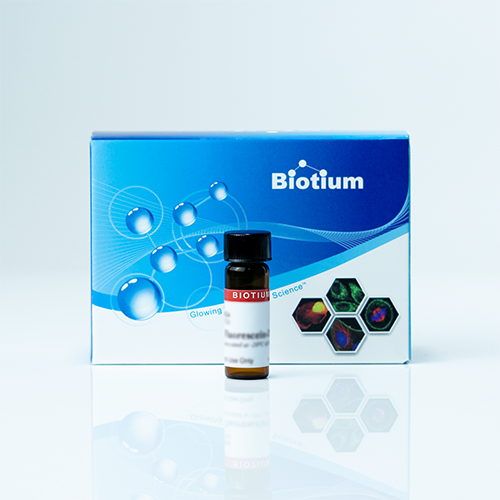Carboxy-X-rhodamine succinimidyl ester, 5 and 6 isomers
5(6)-ROX, SE (full name: 5-(and-6)-Carboxy-X-rhodamine, succinimidyl ester) is an amine-reactive long wavelength rhodamine dye.
Wishlist updated! View wishlist
You may also like…
CF® Dye SE/TFP Ester
CF® Dye SE/TFP esters are amine-reactive fluorescent dyes. They are commonly used to label primary amines of antibodies and other proteins, amine-modified oligonucleotides and other amine-containing molecules.
CFQ520 succinimidyl ester
The amine-reactive quencher, CFQ520 succinimidyl ester, has a broad and intense absorption (approximately 520 nm) but no fluorescence, making it useful as an acceptor in fluorescence resonance energy transfer (FRET) applications.
DMSO, Anhydrous
Anhydrous DMSO (dimethyl sulfoxide; methyl sulfoxide) is recommended for preparing stock solutions of AM ester dyes, reactive dyes and other related moisture-sensitive products.
Cyanine Dye Succinimidyl Ester
Biotium offers high quality amine-reactive succinimidyl ester (SE) dyes used to label proteins, oligonucleotides, and nucleic acids. We offer Cyanine 555, Cyanine 647, Cyanine 680, and Cyanine 750 as high quality succinimidyl esters.
Cyanine NS Dye Succinimidyl Ester
Cyanine NS succinimidyl esters are non-sulfonated cyanine dyes that can be used to label proteins, oligonucleotides and nucleic acids.
CF® Dye Azide
CF® Dyes with an azide group. Can be used to label or detect alkyne, BCN or cyclooctyne-containing molecules by fluorescence spectroscopy, microscopy or flow cytometry following copper-catalyzed azide-alkyne cycloaddition.


